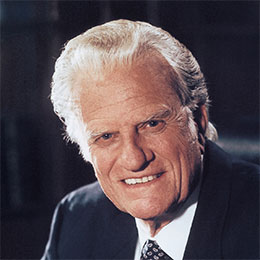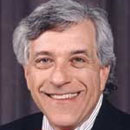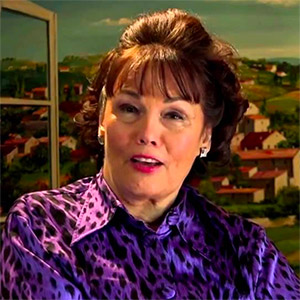Once-abandoned castle looms over a small California town. Its story is spooky and redeeming
Published in Lifestyles
IONE, Calif. — Edward J. Stephens Jr. couldn’t stop running away from his home in Los Angeles. So in the late 1930s, his father made a last-ditch move: Having his son sent to Preston School of Industry.
This juvenile detention facility near Ione, California, operated for more than a century before closing in 2011. And when Stephens was there, he lived at the grounds’ original complex in Ione, Preston Castle, a 47,000-square-foot, 77-room brick building that housed inmates for decades before closing in 1960.
Preston Castle was abandoned and largely exposed to the elements for more than 40 years following its closure. The state moved the inmates to nearby facilities. Even today, the castle remains in considerable disrepair, with the Preston Castle Foundation, which is overseeing restoration work, only allowing visitors on tours to access two of its five floors.
It could be many more years before Preston Castle is fully restored, if it happens. Still, there’s value in seeing the work through, including historical value.
“All history is not necessarily pretty,” said Mike Garavaglia, a San Francisco-based historic preservation architect who’s worked on the castle since the mid-2000s. “I mean, we’ve got basically a prison site here, a reform school prison site. That’s very much part of our culture. And we should tell all these stories.”
This is a place where countless youth passed through its doors, providing a cross-section of the state’s juvenile justice system. For some, Preston Castle was a pit stop before adult prison. Others would find fame after their time spent at the facility. For people like Stephens, though, the place meant something else entirely.
How Preston Castle began
The tour Karl Knobelauch gave of Preston Castle in mid-August began near a photo of the first seven boys who arrived there in June 1894.
The point of the castle, explained Knobelauch, a retired law enforcement officer and the president of the Preston Castle Foundation, had been to create a correctional facility for youth in the state. Previously, youthful offenders had been housed with adult inmates at San Quentin and Folsom state prisons.
Inspiration was drawn from schools to the east like the Minnesota State Training School for Boys and Girls to create something different at Preston Castle.
“They stole everything,” Knobelauch said. “They stole what the building should look like, that the boys wear military-style uniforms, be organized into military-style companies, learn discipline, go to school for half a day and spend the other half learning a trade.”
By June 1895, 165 boys lived at the castle, according to Knobelauch. And even in the castle’s early days, not everyone reformed. Of the first seven boys photographed, one was killed in a barroom brawl within months of leaving, Knobelauch noted.
Officials knew the castle was unsound for earthquakes as early as the 1930s, according to Knobelauch. But it wasn’t the only reason the castle would have to close, with a driving factor being the cost of maintaining the castle as opposed to simply abandoning it and moving to a new building.
Knobelauch said the last of the boys were moved out of the castle in 1955, with the building used for administrative and storage purposes before being closed for good in 1960.
Stephens got to Preston Castle in 1939 because, as his daughter Judi Sweeney of Moreno Valley said, he kept running away from home and it was illegal then. Originally from St. Louis, Stephens lost his mother at a young age. He frequently clashed with his father, who remarried to a nice woman, but was a strict man. Stephens would go and stay with friends, until the police brought him home.
“I think my grandfather just got tired of it,” Sweeney said.
Later in life, Stephens wouldn’t be quick to talk about his years at Preston Castle, though when Sweeney got him to discuss it, Stephens acknowledged that it had been a strict environment where the threat of corporal punishment loomed.
One of Stephens’ fellow inmates was Francis McCown, better known as the actor Rory Calhoun, who spent time at Preston Castle for burglary and grand theft, according to a book, “The Preston Chronicles,” by John F. Lafferty.
While Stephens knew enough to avoid conflict, Calhoun talked back to guards and sometimes got himself in trouble, Stephens told Sweeney. Calhoun also escaped from Preston Castle three times, including once while Stephens was there.
“He did mention that he was a little rambunctious,” said Sweeney, who added that her father liked Calhoun.
Calhoun later served time in federal prison for stealing a car and taking it past state lines, before he became a studio film star. Others who lived at the castle before going on to brighter pursuits include writer Neal Cassady, country music legend Merle Haggard and tennis great Pancho Gonzales.
It wasn’t unusual for people to struggle after a stay at Preston. The 1940 U.S. census listings for the school include others who would spend time in adult prison, such as Alfred Quintana of Ventura who got to the castle in 1939 on a 14-month sentence for forgery and later served time at San Quentin and Folsom prisons.
After Preston Castle no longer housed inmates, those who stayed at the newer Preston School of Industry facility on the same grounds also sometimes had trouble in store.
“When they get paroled, they go back to the old neighborhood and their buddies are just waiting for them to hold up a liquor store,” said Dave Munson, who worked 25 years as a youth corrections officer in Preston’s newer facility before retiring in 2004 and now volunteers at the castle.
Through his volunteering at the castle, Munson has also heard positive stories, the men who’d pull up out front with their wives and children and announce they had good jobs and that Preston School of Industry had helped them reform. But these men, Munson noted, were the exception rather than the rule.
A turning point
In recent decades, the state has grappled with what to do with its juvenile justice system. Gov. Gavin Newsom announced an overhaul of California’s youth corrections system in 2019, later signing S.B. 823 which mandated that California’s juvenile prisons close by June 2023.
“Juvenile justice should be about helping kids imagine and pursue new lives — not jumpstarting the revolving door of the criminal justice system,” Newsom said in a 2019 statement announcing his plans.
Already, there had been signs of change, such as the Preston School of Industry – which was renamed Preston Youth Authority in 1999 – closing in June 2011 due to declining numbers of youthful inmates, according to a brochure from the California Department of General Services.
There has perhaps been something lost with places like Preston Castle now existing only as relics. Its positive impacts were evident in what it did for Stephens, who stayed at Preston Castle until his 21st birthday on Jan. 6, 1942.
“He feels that he would have been out on the street long enough to really get himself in trouble,” Sweeney said. “Sooner or later, his friend’s parents wouldn’t have… let him stay with them, because it would have been too much of a problem. And he would have probably been put into a position of stealing.”
The year he left Preston Castle, Stephens got married two weeks after meeting his bride-to-be on a blind date. He soon headed off for service in the Pacific theater during World War II. Stephens and his wife Alice later raised five children in Southern California. He ran a painting business for many years before dying of cancer at 71 in 1992.
Sweeney said her dad thought that his time at Preston Castle had helped prepare him for military life. She’s also skeptical he would have met her mother without his time at the castle.
“It was a growing experience for my father and he had to grow up,” Sweeney said. “My dad always took responsibility for what he did. He owned up to his mistakes.”
The future of Preston Castle
Preston Castle’s fate remains uncertain. While the building has been on the National Register of Historic Places since 1975 and can’t be torn down, it’s also a far cry from being fully restored.
The Preston Castle Foundation, which purchased the castle for $1 from the state in 2014, has undertaken work like repaving the front parking lot, rebuilding a front covered deck and removing 100 dumpsters worth of trash. “We’re making progress,” Munson said.
Much work remains, though. The building sat without a roof covering it for decades after its abandonment. It remains a haven for bats and owls. Asked if he was confident that Preston Castle could be brought back, the 73-year-old Knobelauch replied, “Yeah, probably not in my lifetime.”
The castle looms over Ione just down the road, with Munson having seen it much of his life since moving to town as a child. In high school, he and others would sneak into the castle.
There are rumors that the place, like other parts of Ione, is haunted.
“If you drive by the prison, it’s kind of cool,” said Nina Flores, who works at a western supply store on Main Street. “It’s creepy, though.”
The castle hosts seasonal tours and special events, though for some like David Turner, who works at an Ione pizzeria, it isn’t enough. He admitted he didn’t know a lot about Preston Castle. “I wish they would open it up to the public more, open it everyday” Turner said.
Knobelauch has heard through Garavaglia that the full cost for repairs could be as much as $45 million. The foundation would like to find a deep-pocketed investor who could help bankroll repairs and, in return, use the restored castle for events. Already, the castle is a popular destination for weddings and film shoots.
Garavaglia sees a lot of value in restoring the castle, from the image it projects to Ione to what’s capable through adaptive reuse.
“Why throw something away that has much more life to it?” Garavaglia said. “We sometimes lose sight of what a building can be over multi generations.”
Sweeney has toured the castle and said the experience made her wonder what her father might have witnessed or experienced in different rooms. The castle features rooms where as many as 55 boys slept at night and where there are bed frames today. Sweeney wondered what bed her dad might have been in.
Stephens’ five children went in on a $100 commemorative brick that’s just beyond the parking lot of the old castle. Sweeney wishes she had all the money Preston Castle needed for repairs. She said she feels that people need to see not just the bad part of being in these institutions, “but the benefits… of what it can save someone from becoming.”
She added, “I think my dad got his pride back.”
©2024 The Sacramento Bee. Visit at sacbee.com. Distributed by Tribune Content Agency, LLC.

































Comments